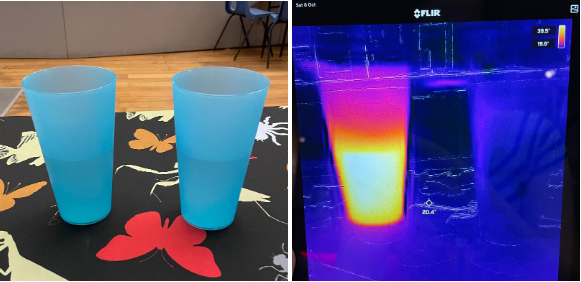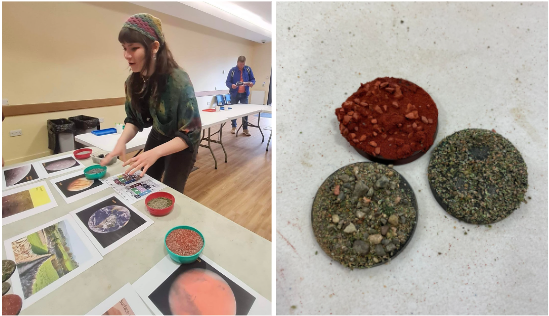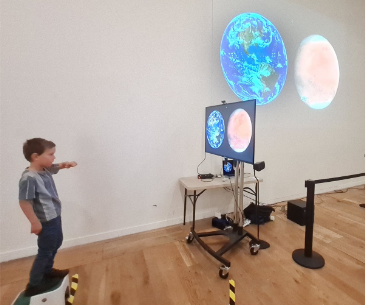To celebrate World Space Week 2022 the astronomy group at Newcastle University ran a “space day” at the Great North Museum: Hancock [1,2]. During the day we had a number of engaging multi-sensory astronomy related activities.
Throughout the day there were 10 minute flash talks, presented by Vicky Fawcett (PDRA), Danny Dixon (PhD), and Dr David Rosario (Senior Lecturer). The flash talks explored the topics: ‘Alien Worlds’, ‘Do Galaxies Dance?’, and ‘Space Junk: Taking out the Trash’, the latter of which is linked to the theme of this year’s World Space Week: Space Sustainability.
Other activities included a James Webb Space Telescope (JWST) demonstration. This was delivered predominantly by Dr David Rosario, who is leading one of the first science projects with JWST. Visitors could use iPads connected to IR cameras to explore how JWST sees the Universe. Various demonstrations included one person hiding behind a bin bag, which is opaque to our eyes. However, when the IR camera is used, we can see straight through. This is similar to how JWST views galaxies – we can now “see” behind obscuring dust, finding details that we could not see previously (e.g., with the Hubble Space Telescope). An additional demonstration is shown below; using IR to compare temperatures.

We also ran a craft activity in which you could make your own planet surface (see images below). Visitors could choose whether to create the surface of Earth, Mars, Mercury, Venus, or to imagine a completely new planet.

One of the highlights of the activities was our astronomy sonification, where visitors could use the motion of their hands to explore astronomical images using sound (example shown below). This activity used code by Michele Ginolfi (for more details, see [3]) and was also inspired by Audio Universe, an outreach project led by Dr Chris Harrison, that aims to make Astronomy more accessible to vision impaired children (for more details, see [4]). Throughout the day visitors could also watch the ‘Audio Universe: Tour of the Solar System’ planetarium show, which explores the solar system with sound (developed by Dr Chris Harrison, see [5]).

Another multi-sensory activity we ran was a tactile treasure hunt, inspired by Tactile Universe, an outreach project led by Dr Nicolas Bonne at the University of Portsmouth, which is another project that aims to make Astronomy more accessible (for more details, see [6]). Visitors followed clues spread around the museum to find 3D printed tactile models and educational facts for a variety of astronomical objects.
Overall the museum had ~650 visitors on the day and we received very positive feedback. We will continue to work with the Great North Museum on future outreach projects with the aim to inspire more school pupils based in North East England to pursue a STEM career.
None of this would have been possible without the Great North Museum staff, astronomy staff, outreach team, and PhD students who helped organise and run the event; in particular, Dr Chris Harrison and Dr Vicky Fawcett.
References:
[1] https://greatnorthmuseum.org.uk/
[2] https://www.worldspaceweek.org/
[3] https://ikeloablog.com/2022/03/27/diamo-un-po-di-suono-alle-immagini/
[4] https://www.audiouniverse.org/home
[5] https://www.ncl.ac.uk/press/articles/latest/2021/11/audiouniversetourofthesolarsystem/[6] https://tactileuniverse.org/
